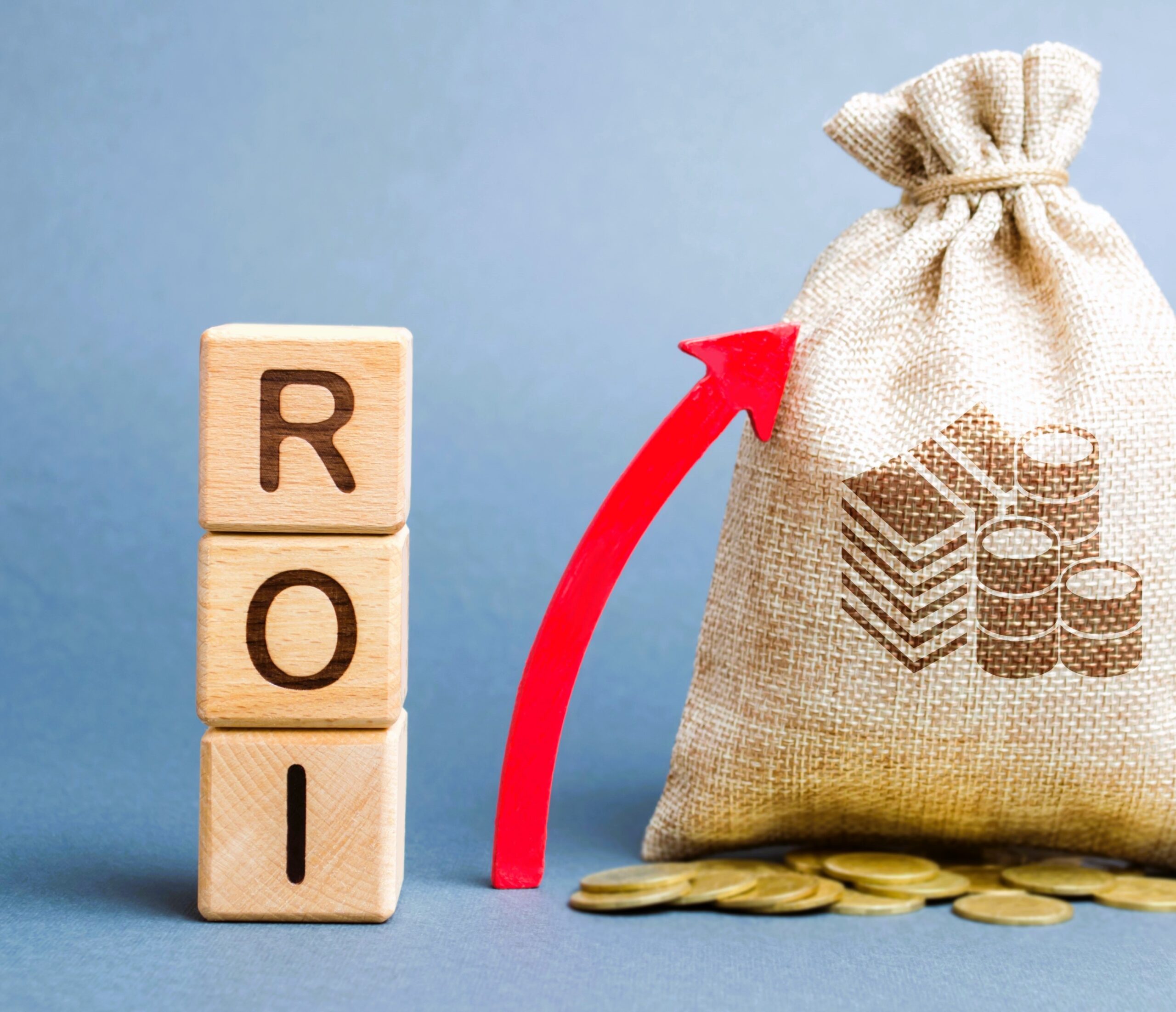
Marketing is essential for any business – after all, it’s how you tell the world about the products and services you’re selling. But how do you know if it’s actually working? Are you really getting your money’s worth in terms of return on investment (ROI)?
This article is all about how to increase ROI. That means getting more bang for your buck from your marketing spend. We’ll cover which metrics you should keep an eye on and share some tactics for making sure your campaigns are as effective as they can be. Plus, we’ve got some handy tips on how to improve ROI in digital marketing.
So, if you’re looking to get more out of your digital ads, social media posts, and other online marketing content, you’re in the right place!
Brand Visibility Impacts Sales
Before we explain how to increase marketing ROI, it’s worth talking about brand visibility — in other words, how well your brand is seen and recognized by potential customers.
When your brand is more visible, it increases the likelihood that people will think of your business when they’re ready to buy. This improved recognition can lead to more sales as your brand starts popping up in the minds of consumers at the right time.
Now, let’s connect this to ROI. As we’ve mentioned, ROI is all about measuring the effectiveness of your spending. When you invest in making your brand more visible, you’re doing it with the goal of increasing sales. Increasing ROI means you’re getting more sales, and therefore more profit, for every dollar you spend on marketing and brand visibility efforts.
How to Improve ROI in Digital Marketing?
So, how do you increase return on investment? Well, it’s about being strategic with your marketing spend.
It involves identifying the most effective ways to boost your brand’s visibility, attracting more customers, and ultimately converting those efforts into sales. By carefully choosing where and how to invest in marketing, you can ensure that every dollar spent contributes as much as possible to your bottom line.
In the next section, we’ll look at some specific tactics you can use to maximize ROI.
7 Ways to Increase ROI
1. Select KPIs corresponding to your goal
It’s always important to choose the right methods to execute and track your work. Just like you wouldn’t use a hammer to fix a broken vase, you need to select the right KPIs (short for key performance indicators) to monitor progress. These metrics will help you accurately measure your path towards your specific business goals.
Let’s say your goal is to boost sales. In this case, you’ll want to track KPIs like conversion rate, which tells you how many people who visit your website or see your ad end up buying something.
Other important marketing metrics include customer acquisition cost, which shows how much money it costs to acquire a new customer, or customer lifetime value (how much a customer is worth to your business over the entire period they’re a customer).
On the other hand, if your goal is to increase awareness, you’re looking at a different set of KPIs. You might focus on website traffic, which shows how many people are visiting your site. Social media engagement is another key metric, including likes, shares, and comments, showing how much people are interacting with your brand online. Brand mentions across the web can also be a great indicator of growing awareness.
By choosing KPIs that align with your goals, you ensure you’re collecting the right data. It’s an important step on the journey towards better ROI.
2. Don’t engage in guesswork, collect data
Using data in marketing is essential because it replaces guesswork with hard facts.
When you rely on guesswork, you’re making decisions based on assumptions, which can be risky and inaccurate. Data, however, provides concrete insights into customer behavior, preferences, and trends. This allows you to tailor your marketing strategies effectively, targeting the right audience with the right message at the right time.
In short, data-driven marketing enables you to make informed, strategic decisions. This is central to understanding how to increase ROI in marketing, as it leads to more effective use of your marketing budget, better customer engagement, and ultimately, higher returns on your marketing investments.
3. Experiment and A/B test
Once you’ve started collecting the right data on your customers, you can build on this by gathering concrete evidence on which aspects of your paid campaign are most effective. You can do this through experimenting and A/B testing.
In marketing, these techniques involve creating two different versions of a campaign and testing them with your audience to see which one performs better. This could involve tweaking elements like ad copy, design, or placement.
It’s a far more reliable approach than betting on assumptions or general industry trends, as you can optimize your paid campaigns based on actual user responses and preferences. And it’s one of the best ways to increase ROI. By continually testing and refining your campaigns, you’re able to allocate your budget more effectively, focusing on strategies that have proven successful. This leads to better use of resources and a higher return on investment.
If you’re a marketer looking to increase your ROI, experimenting and A/B testing are key tactics you should be using.
4. Analyze KPIs starting from the top and go into details
A good way to analyze the performance of your campaign is in a structured, top-to-bottom approach. That means starting with the big picture — how your overall campaign is performing — and then delving into the specifics to understand the ‘why’ and ‘how’ of the results.
A methodical analysis like this helps pinpoint strengths and areas for improvement, leading to more informed, strategic decisions in the future.
Here are some of the metrics to pay close attention to:
🔵 Click-through rate (CTR): This measures how often people click on your content after seeing it. A high CTR indicates that your content is relevant and appealing to your audience.
🔵 Conversion rate: This shows the percentage of viewers who take a specific action (like making a purchase or signing up) after interacting with your content. It’s a good indicator of your content’s effectiveness in achieving its goals.
🔵 Cost per click (CPC): Relevant for ad campaigns, this is the amount you pay each time someone clicks on your content. Lower CPC means your campaign is cost-effective.
🔵 Quality score: This marketing metric is specific to paid search ads. It reflects the relevance and quality of your content. Higher scores are generally beneficial for visibility and cost efficiency.
🔵 Return on ad spend (ROAS): Another one that’s important for paid content. ROAS measures the revenue generated for every dollar spent on advertising. It’s a direct indicator of the financial effectiveness of your campaigns.
🔵 Cost per conversion: For paid content, this tracks how much it costs to achieve each conversion, helping you judge the financial efficiency of your campaign.
🔵 Impression share: This metric indicates the visibility of your content, showing how often it’s displayed relative to the potential number of times it could be seen.
🔵 Lifetime value (LTV): This measures the total revenue you can expect from a single customer over the course of their relationship with your company. High LTV indicates valuable, long-term customers.
By analyzing these KPIs, whether for organic or paid content, you can get a solid overview of your marketing strategy’s performance and identify areas for improving ROI.
5. Shift funds from worse-performing campaigns to better-performing ones
This is another smart move in learning how to increase return on investment — and one that again shows why it’s important to monitor performance data on paid campaigns closely.
By shifting funds from worse-performing campaigns to better ones, you’re essentially putting your money where it’s most effective by reallocating resources to campaigns that show better results.
This kind of marketing optimization not only boosts the success of your top-performing campaigns but also leads to improved ROI overall.
6. Spot patterns
Spotting recurring patterns in data is the holy grail for any marketer focused on how to increase ROI in business. By identifying them, you can use successful strategies as blueprints for future campaigns and steer clear of past missteps.
The secret to this? Regular data analysis. It’s about understanding the relationship between trends and outcomes. For example, you might discover that marketing emails sent on Fridays drive more website visits, or that ads featuring videos perform better on certain social platforms.
7. Do more of what works
This is the real secret to improved ROI in marketing. It’s all about capitalizing on proven success.
When you identify strategies that resonate with your audience and deliver good results, focusing more effort and resources on these tactics makes sense. It’s like following a recipe that everyone loves. By doubling down on what’s already working, you’re optimizing your marketing budget, making sure that every dollar goes further in engaging your audience and boosting your overall returns.
How to Increase ROI for your Marketing Efforts?
In short, figuring out how to improve ROI is about a smarter investment of time and money.
Begin by choosing the right KPIs, then dive into data analysis and embrace A/B testing. Next, consider reallocating resources towards your most successful campaigns. On top of this solid foundation, fine-tune your strategy by regularly identifying patterns in your data and doubling down on effective tactics.
By following these strategies, you’re well on your way to not only meet but smash your marketing goals — and see an increased ROI. But remember, while data is key, don’t forget the art in the science of marketing – it’s the creative approaches, backed by data-driven decisions, that really make a difference.


